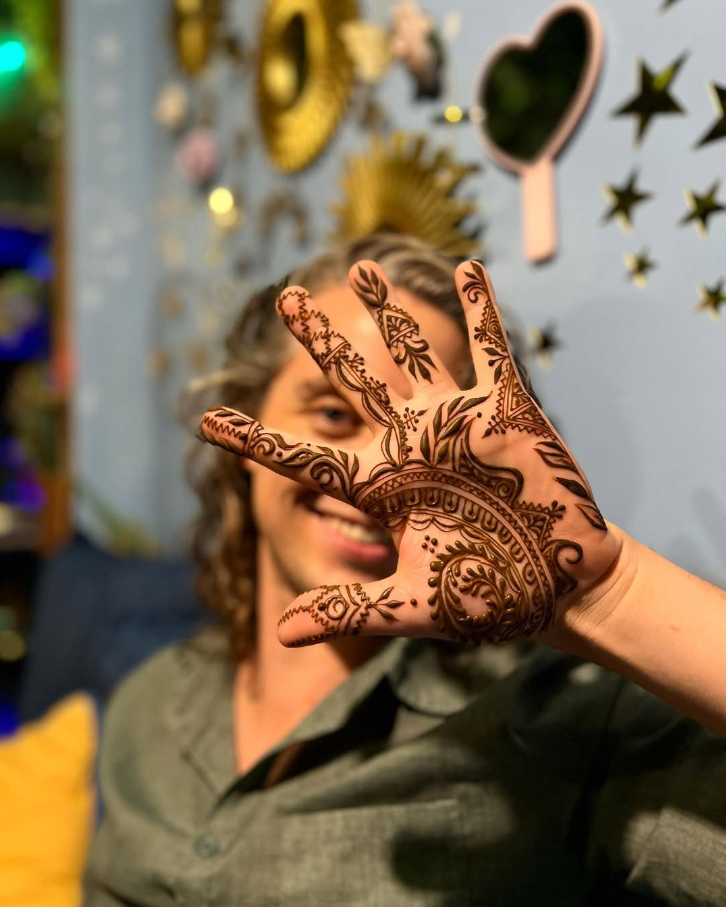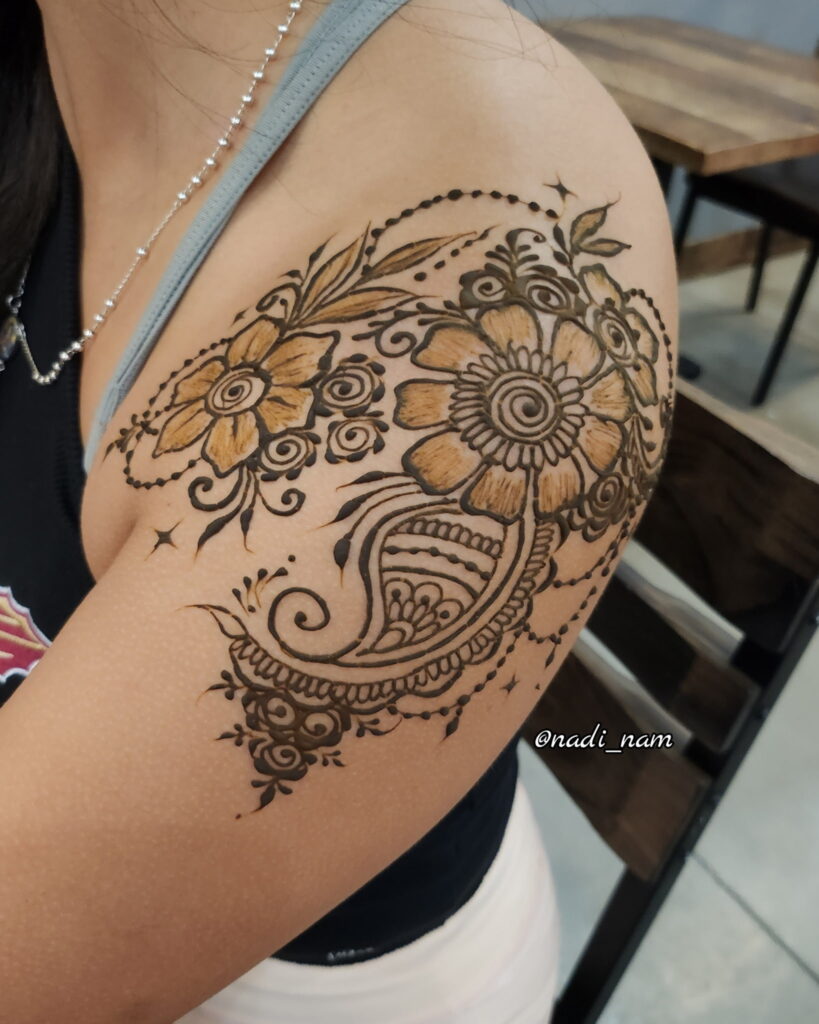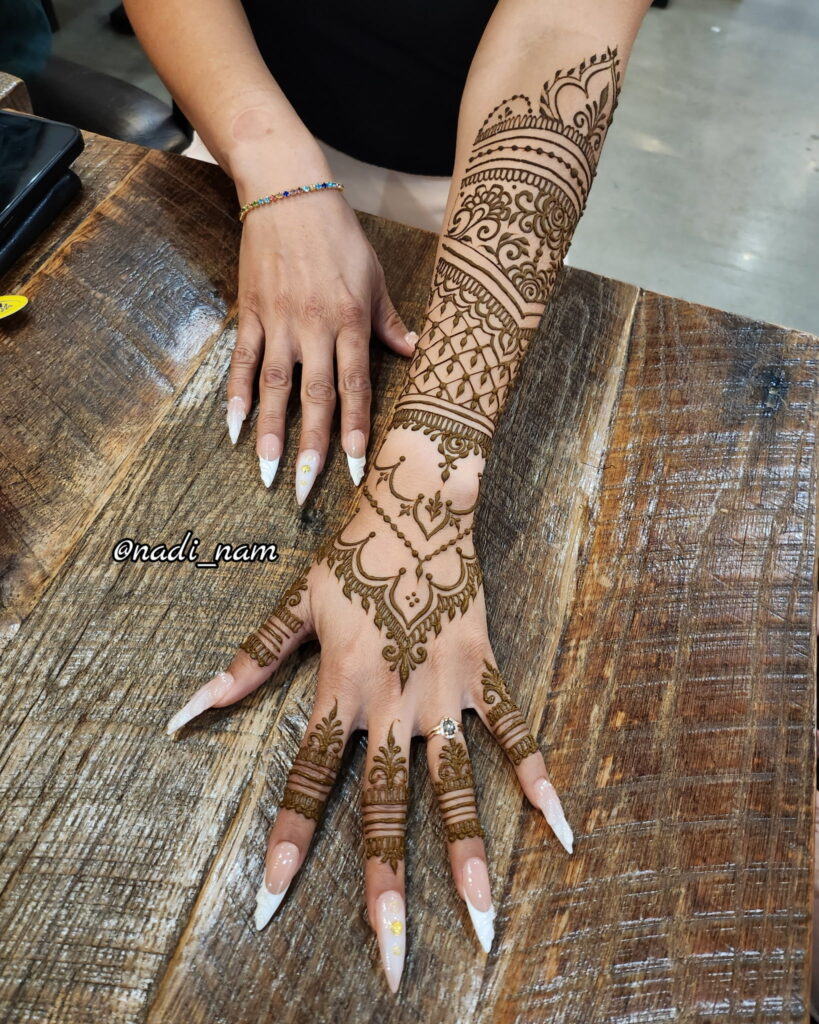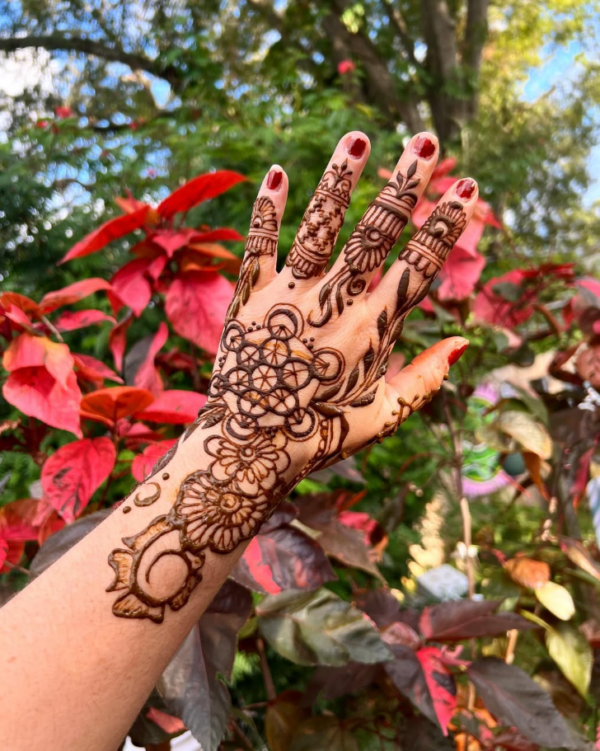By Noah Chase
Henna use, once primarily tied to cultural and ceremonial traditions, has expanded into a global industry and is embraced today as a popular form of self-expression and body art.
“In Central Florida, nobody really knew what henna was—only in smaller circles,” said Tampa Bay henna artist Nadiyah Mahmood of Henna by Nadi Nam. “But now it’s grown tremendously… It’s at fairs now, at Disney [and] at Busch Gardens. Everyone wants to get it done.”
Primarily used in African, Asian and Middle Eastern cultures, henna has become widespread and continues to grow in popularity outside of its traditional uses.
“There are so many different types of cultures that use henna,” said local St. Petersburg henna artist Sumayah Lea of Talia Moon Botanica. “It’s a pretty wide range of designs that go along with that too, and you can usually tell what type of culture someone is from based on the designs themselves.”
Henna leaves a temporary stain on the skin, hair, nails or fabric when applied as a paste. Traditionally, it has been used in cultural ceremonies like weddings and religious holidays.
Beyond its decorative role, henna has also been historically valued for its natural cooling properties.

“The appeal is that it’s beautiful and temporary,” Soulshine Henna owner Elisa Giacona said. “People like that. I found my favorite art medium [henna]. I fell in love with it because it’s natural, from a plant, it’s temporary and the color changed. It all just fascinated me. I started [henna] and just haven’t stopped.”
Henna, often compared to a tattoo for its intricate designs and temporary nature, has gained widespread popularity for offering the beauty of body art without a lifelong commitment.
“It’s become so popular in modern times that women here in the West really adore getting it done because it’s less of a commitment compared to getting an actual tattoo,” Mahmood said. “It makes you feel feminine and very beautiful.”
Henna paste is typically made from four ingredients: henna plant powder, cane sugar, essential oil and a binding liquid, which is usually water or different fruit juices.
“It has become more popularized and more available, so people are trying it themselves,” Giacona said. “Especially in this area because we have the sunshine.”

To apply henna, artists clean the area first and ensure the client remains still while the paste is applied. Afterward, clients must sit patiently as the henna dries—a process that can take several hours before the stain sets properly.
“It’s a living, breathing art form,” Lea said.
Giacona and Mahmood both said that social media has contributed significantly to henna’s recent rise in popularity.
“I thank social media because it helped educate people about certain things and made people become more aware of henna,” Mahmood said.

When Mahmood was a child, she said she would often be questioned about what was on her skin when she wore henna for holidays such as Ramadan because “it was not as normalized.”
Henna has also been known for its therapeutic properties, thanks to its calming essential oils and the meditative experience of watching it being applied.
“Henna is something that really touched my soul in a way that nothing else ever did because it’s a plant and has medicinal qualities as well as being an art form,” Lea said.
As henna continues to gain mainstream popularity, it remains a powerful blend of cultural tradition, natural beauty and personal expression that resonates with people across the globe.
